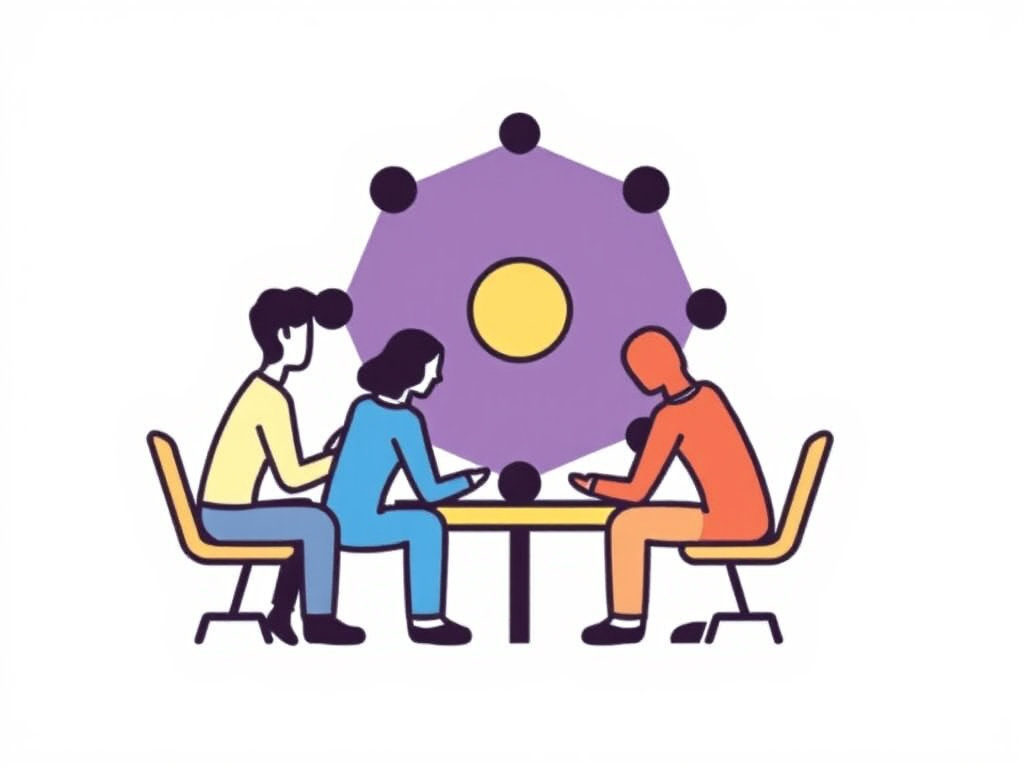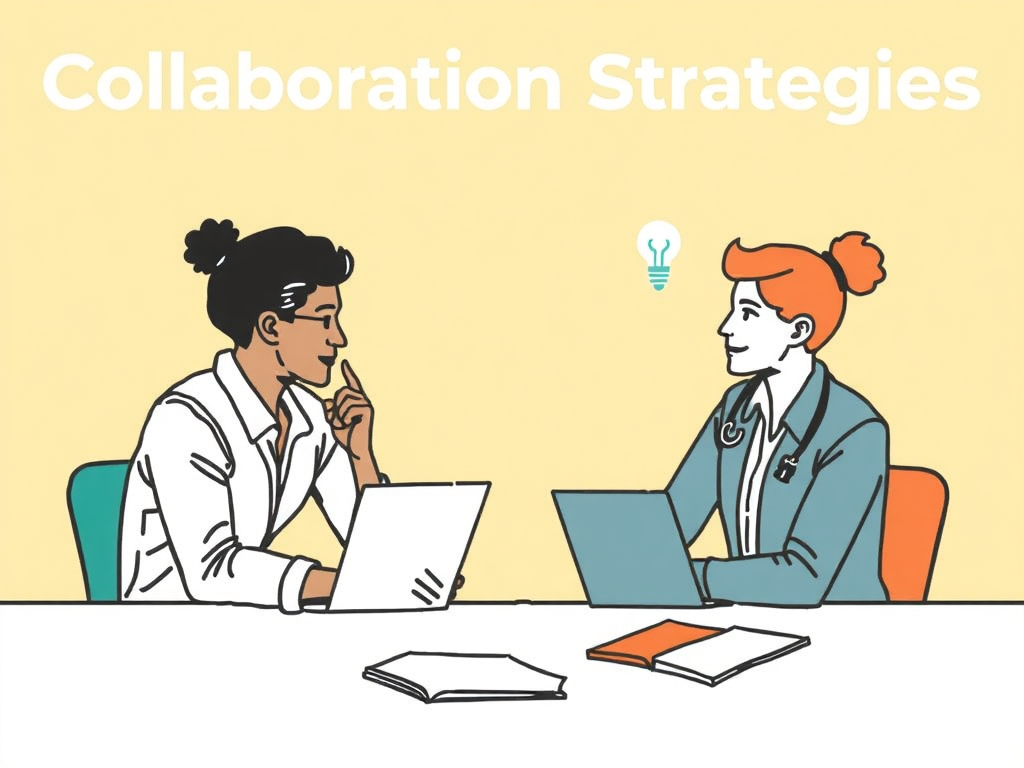Collaborating effectively on group projects is crucial for success. Companies that focus on teamwork are significantly more likely to excel. By employing strategic communication, defining roles clearly, using technology efficiently, and creating a trusting environment, groups can unlock creativity, increase productivity, and improve efficiency.
Key Takeaways
- Strong collaboration with clearly defined roles boosts performance and sparks innovation in group projects.
- Digital tools enhance communication and streamline project workflows, providing noticeable productivity gains.
- Effective communication and peer coaching are vital strategies to improve team dynamics and trust.
- Tackling common challenges in group projects requires building a culture of trust and commitment among team members.
- New trends like AI, hybrid workspaces, and AR/VR technologies are transforming the future of group collaboration.
The Critical Role of Collaboration in Project Success
Teamwork isn’t just a nice-to-have; 75% of employers consider it crucial for project success. Strong collaboration links directly to high performance. Companies that encourage collaboration are five times more likely to thrive. This isn’t just about better statistics; collaboration also enhances employee engagement.
Engaged employees often see better results in their work. In fact, 73% report improved performance, while 60% notice a boost in creativity and innovation thanks to effective collaboration. Sharing ideas freely in a collaborative environment creates a vibrant workplace where innovation flourishes naturally.
Building Strong Group Dynamics: Roles and Structures
Optimal team size holds considerable importance. Studies suggest that groups of 3-5 consistently outperform smaller groups or individuals, fostering more comprehensive discussions and diverse perspectives. Each member’s contribution maximizes when roles are clearly defined. This clarity minimizes inefficiencies, preventing overlap and confusion.
Diversity within a group elevates the quality of output. Cross-disciplinary teams blend different skills and viewpoints, producing innovative solutions. However, this potential can only be realized with effective communication. It’s crucial to establish a common language and ensure everyone contributes equally. Setting these foundations can significantly enhance group projects’ success and efficiency.

Embracing Technology: Tools for Enhanced Collaboration
Integrating digital tools has transformed how teams work together. According to a recent survey, 70% of workers believe these tools significantly improve collaboration, with 83% depending heavily on them for teamwork. The adoption of technology has led to productivity gains of 20-30%, showcasing its impact on efficiency.
Incorporating such solutions reduces email volume by 30%, streamlining communication channels effectively. Beyond productivity and communication, the advantages of remote work stand out, providing both financial and operational benefits. Employers can save up to $11,000 annually by leveraging remote work options.
Adopting these tools isn’t just about staying current—it’s about enhancing overall group project success, ensuring every team member can contribute from anywhere. Make these tools a staple in your project strategy toolbox for greater productivity and cost-effectiveness.

Effective Strategies for Successful Group Collaboration
Communication is crucial for workplace success. In fact, 86% of failures are linked to poor communication. Make it a priority to establish clear channels and regular updates. Use tools like Slack or Zoom to keep everyone on the same page. Start meetings with concise agendas and encourage open discussions.
Aligning goals can significantly influence project outcomes. A surprising 97% of employees point to goal misalignment as a major hurdle. Begin every project by defining common objectives. Document them and revisit regularly to ensure everyone is headed in the right direction. Be vigilant about recognizing any drift and take steps to realign swiftly.
Peer coaching provides incredible advantages. It can boost productivity by as much as 88%. Not only does it help team members learn from one another, but it also strengthens bonds and builds trust. Pair up members with complementary skills. Encourage knowledge sharing through regular mentor-mentee sessions.
Decision-making flourishes in an environment of open dialogue and shared knowledge. Embrace diverse perspectives to enhance outcomes. Be open to ideas, draw insights from different fields, and leverage individual strengths. It often leads to more innovative solutions and a stronger commitment to decisions made.
Leverage these strategies to transform group projects from burdensome tasks into collaborative successes. You’ll find that teamwork becomes more cohesive, efficient, and rewarding for all.

Overcoming Challenges in Group Projects
Group projects often face common obstacles that can hinder success. Lack of trust and organizational silos affect 39% of employees, limiting collaboration. When people distrust each other or organizations operate in silos, communication breaks down. This hampers the sharing of ideas and resources. Encouraging open communication and building a culture of trust can dismantle these barriers.
Technology limitations present another major challenge. Without compatible tools, teams can’t collaborate effectively. Investing in versatile, user-friendly technology ensures everyone can contribute without technical hiccups.
Team commitment also plays a crucial role. Just 30% of employees feel there’s mutual dedication to quality. This sense of imbalance leads to disengagement and increases turnover. Establishing clear responsibilities and fostering a shared vision helps boost commitment.
In essence, addressing these challenges head-on provides smoother collaboration. By adopting trust-building practices, leveraging the right technology, and nurturing commitment, group projects can become a seamless and productive endeavor.

Future Trends in Group Collaboration
AI-driven solutions are poised to transform how groups work together. Automating tasks like scheduling and project management can significantly boost efficiency. By delegating repetitive chores to AI tools, teams can focus on strategic efforts and creativity. This change not only streamlines workflows but also enhances productivity.
Hybrid workspaces are becoming the standard, and they’re great for balancing work and personal life. They allow teams to tap into global talent, expanding the pool of skills available. Collaboration tools have advanced, enabling teams to work seamlessly from anywhere. This flexibility is crucial as organizations draw in diverse perspectives to foster innovation.
Augmented Reality (AR) and Virtual Reality (VR) are playing an increasingly important role in training. By using these technologies, teams can engage in immersive learning experiences. According to some experts, spending on AR/VR is expected to reach $2.8 billion. Training sessions become more engaging, retention rates improve, and the learning curve is shortened with these interactive methods.
Implementing these trends involves more than just adopting new technologies. It requires a genuine shift in how teams communicate and collaborate. Embracing these advancements can lead to an enriched team environment where innovation and adaptability thrive.

Sources:
ElectroIQ – “Teamwork Statistics”
Runn.io – “Teamwork Statistics”
Sciodev – “Collaboration Trends for 2025: The Future of Teamwork”
ProofHub – “Workplace Collaboration Statistics”
Flowlu – “Work Collaboration & Teamwork Statistics”
Sci-Tech Today – “Workplace Collaboration Statistics Updated”
ProofHub – “Project Collaboration”
TeamOut – “Team Building Statistics”

One Comment
[…] Greater ability to articulate ideas clearly in team settings. […]